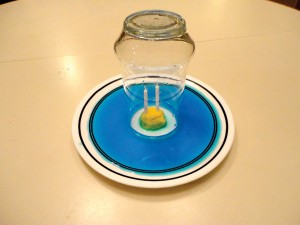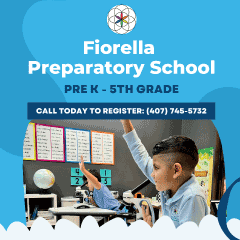Simple Science: Air Pressure Experiments
Hey kids (and parents)! Ever wonder about the term “air pressure?” With a couple of simple experiments, we can demonstrate that air wants to travel from high pressure to low pressure. There is an old saying that “Nature dislikes a vacuum.” Of course, this does not mean a vacuum cleaner, but rather refers to a lack of air.
What is “pressure?” Air pressure is basically the amount of air molecules compressed within a certain area. For example, when you fill a balloon or the tires on your bike, the air inside is under pressure. If there is only a small amount of air in the balloon, the pressure is low. If you fill up the balloon, the air pressure within is high. If you let go of the balloon, all the air shoots out, spinning the balloon all over the place. The high pressure air inside the balloon wants to move to the low pressure air outside of the balloon. Remember what we said: high pressure wants to travel to low pressure.
OK, now that we have an idea of the science behind high and low pressure, let’s have some fun and demonstrate the concept using materials that can mostly be found in your kitchen!
Candle in a Plate of Water
Materials you’ll need:
- A plate
- Water
- A tall glass cup
- A lump of clay
- A few birthday candles
- Matches (get your parent to help you out with this)
- Food coloring
 What to do:
What to do:
1. Pour water onto a plate so that it fills it. Put a drop or two of food coloring in the water.
2. Stick a candle into a ball of clay and place it in the middle of your plate.
3. Light the candle.
4. Put the cup over the candle. (Can you guess what will happen?)
The candle will slowly extinguish and then the water will creep up into the cup. Pretty amazing! How does it do that? The air heated by the candles pushes its way out from under the cup (hot air expands and causes bubbles at the bottom). As soon as the candle goes out, the air cools and shrinks, but now there is less air in the cup than when we started. This is low pressure. Remember the rule? The outside air (high pressure) wants to push its way into the cup (low pressure). Moms and dads, have your child experiment with more or less water, or more candles.
Here’s another quick one to amaze your friends:
The Floating Water Trick
- Materials you’ll need:
- Drinking glass
- Water
- An index card
What to do:
1. Fill the glass completely full of water.
2. Put the index card (or other stiff piece of paper) over the top of the glass.
3. Standing over a sink (it needs some practice…) hold the index card to the top of the cup and flip the cup over.
4. Holding the cup, let go of the paper.
The water mysteriously stays “floating” in the cup defying gravity, only held in the cup by the card. The trick? Air pressure, of course. When you flip the cup over, a low pressure zone is created inside the cup. The outside air (high pressure) wants to push into the cup but the card held against the cup is in the way!
If you think about it, you might see this concept in action with plungers, vacuum cleaners, and even the weather! If you have more questions about this, or need tips about science fair ideas on this topic (or others), contact the author at steve.davala@gmail.com. Follow him on Twitter or on www.stevedavala.com. The Carbon Knight is a middle school science teacher and dad who likes to try out his science experiments with his two willing and eager children.











